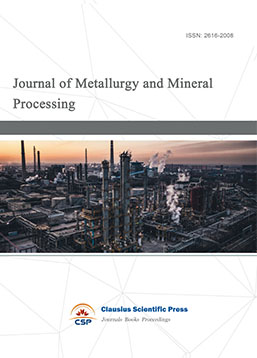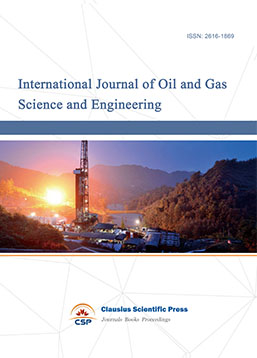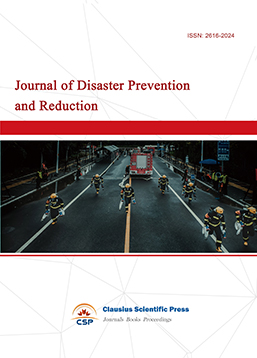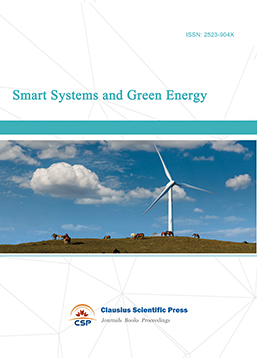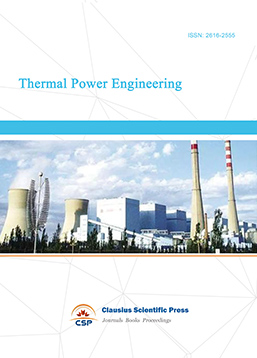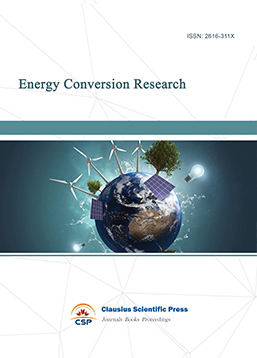The Types and Mechanisms of Shahe Street Reservoir Damage in KL10-1 Oilfield
DOI: 10.23977/fpes.2023.020103 | Downloads: 7 | Views: 682
Author(s)
Xinliang Wang 1, Honghua Zhu 2, Xu Chen 1, Qiang Ren 1, Kai Yang 1
Affiliation(s)
1 CNOOC EnerTech-Drilling & Production Co., Tianjin, 300452, China
2 CNOOC Tianjin Branch Company, Tianjin, 300459, China
Corresponding Author
Xinliang WangABSTRACT
From 2016 to 2022, the productivity recovery rate of oil well in KL10-1 oilfield continued to decline after the workover operation, and the complex treatment situations increased continuously which caused by the high temperature and corrosion issues since 2018, that multiple wells had been scaling in the downhole central tube, which resulted in extended downtime, annual total production decline of single well and high costs. Through the analysis of reservoir properties, subsurface fluid properties, and rock surface physical chemical characteristics, the article finds that the wells with productivity recovery rate are mainly concentrated in the Es formation which has low-to-moderate permeability and high wax content. The reason is that the inherent potential damage factors of the formation are induced by various external conditions, such as water lock damage and inorganic scale accompany the whole development and production process of the oilfield, as well as wax deposition in the low-to-moderate water cut stage are the main risk factors that cause the absolute permeability or relative permeability of the reservoir decrease significantly, and the oil well production decline.
KEYWORDS
KL10-1oilfield, workover, Es formation, productivity recovery rate, reservoir damage, water lock, wax deposit, inorganic scaleCITE THIS PAPER
Xinliang Wang, Honghua Zhu, Xu Chen, Qiang Ren, Kai Yang, The Types and Mechanisms of Shahe Street Reservoir Damage in KL10-1 Oilfield. Frontiers in Power and Energy Systems (2023) Vol. 2: 15-25. DOI: http://dx.doi.org/10.23977/fpes.2023.020103.
REFERENCES
[1] Xu Liangwei. Technology for Reducing Strong Water Lock Damage in Low Porosity and Low Permeability Sandstone Reservoir. Guangzhou Chemical Industry, 2023, 51 (05):191-193.
[2] Li Weiping. Influencing Factors and Preventive Measures of Water Locking Damage in Low Permeability Reservoirs. Fine and Specialty Chemicals, 2022, 30 (09): 27-29.
[3] Chunquan L, Honghan C, Huimin L. Fluid Inclusion Constrained Multiple Petroleum Chargings in the Lithologic Reservoirs of the Late Eocene Shahejie Formation in the Minfeng Sag, Bohai Bay Basin, East China. Energies, 2022, 15 (10).
[4] Sun Duo, Liu Chengzhou, Xu Wenyun, etc. Prediction and Analysis of Potential Factors of Low Permeability Reservoir Damage by Micro Representation Method. Liaoning Chemical Industry, 2022, 51 (03): 430-433.
[5] Liu Meiyao. Study on Compatibility of Injection Water and Pressure Reduction and Injection Increase in Low Permeability Reservoir of Offshore Oilfield B. Southwest Petroleum University, 2015.
[6] Yang Xianyou. Potential Damage Problems and Countermeasures of Low-permeability and Ultra-low-permeability Reservoirs. Technology Supervision in Petroleum Industry Journal Agency, 2011, 27 (06): 14-18.
[7] Wei Maowei. Study on Water Lock Damage Relief Technology in Low Permeability Reservoir. Jinan University, 2010.
[8] Li C, Wang L, Chen P. Sedimentary environment and geochemical characteristics of Shahejie Formation in Huimin Sag, Bohai bay basin, China. Arabian Journal of Geosciences, 2020, 13 (21).
[9] Fan Hongwei, Fu Meili. Study on Water Injection Damage of Low Permeability Reservoir. Petrochemical Industry Application, 2008 (02): 32-34.
[10] Liao Ruiquan, Xu Yonggao and Hu Xuebin. Damage of Water-blocking Effect to Low Permeability Reservoir and Its Inhibition and Removal Methods. Natural Gas Industry, 2002 (06): 87-89+3-2.
[11] Liu Meiyao, Li Haitao, Xie Chongwen, etc. Study on Compatibility of Injection Water and Reservoir in Shahejie Reservoir of JX1-1 Oilfield. Chemical Engineering of Oil and Gas, 2015, 44 (02): 86-90.
[12] Shen Jianjun, Tang Hongming, Wang Yijun, etc. Reservoir Scaling Mechanism of Shahejie Formation in Qikou 18-1 Oilfield and Its Influence on Water Injection Development. Reservoir Evaluation and Development, 2018, 8 (03): 40-45.
| Downloads: | 116 |
|---|---|
| Visits: | 7650 |
Sponsors, Associates, and Links

 Download as PDF
Download as PDF